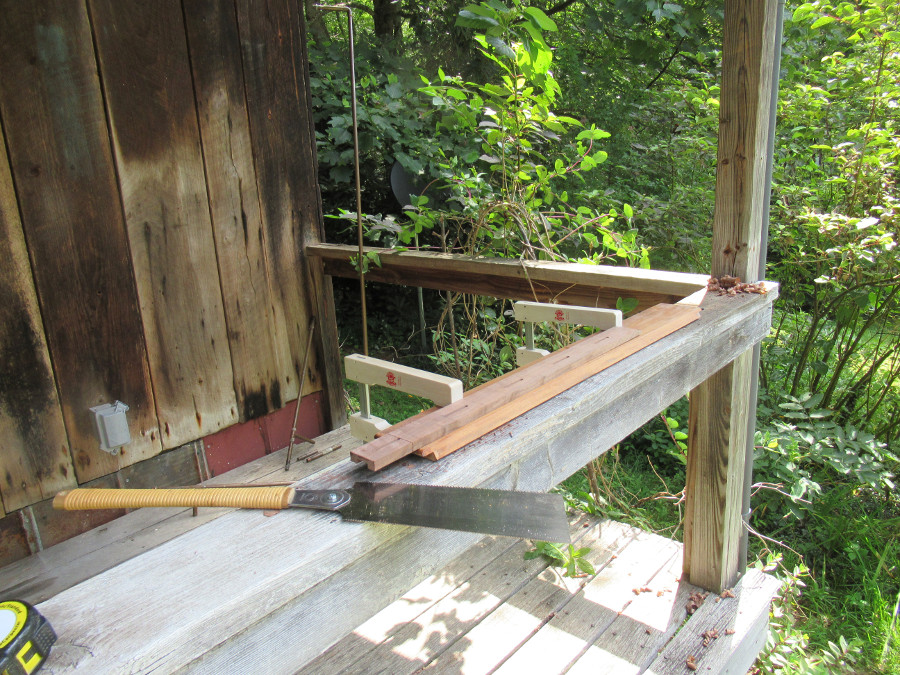We spent each weekend
of July in a cabin on the farm of some friends. Instead of taking all my vacation in one lump, I worked short weeks and had long weekends all through July. Each weekend was its own mini-vacation and each had a distinct character. One weekend had a party centered around a wood-fired pizza oven. One weekend was mostly hiking and swimming-hole lounging. Two weekends had lots of socializing, and we spent two weekends alone as a couple. I recommend it!
Our friends asked me to do a little tuneup of the cabinet doors in the cabin: some wouldn't quite close, and none would stay closed. Would I trim the doors to fit, and add home-made wooden closures to keep the doors closed? So I had a small-scale project to execute almost entirely with hand tools, away from my shop.
As I worked, I realized the improvised workholding might be worth sharing. So here are some photos and brief captions.
Wooden hand screws are excellent for getting a workpiece to balance on edge. These are long enough that when I used that post as a stop, I could make a full stroke with the plane without smacking the post.
And here's a bench hook of sorts. The larger piece of wood held to the porch rail by the clamps protects the rail from being sawn.
The clamp heads hold the workpiece as I cut with the Japanese saw - - no clamping required, just let the saw's action hold the workpiece against the end of the clamp's jaw.
By the way, I like these Klemmsia clamps. They're not wood-crushingly powerful like F-clamps or C-clamps, but they hold quite well, grip nicely with their cork liners, and never mar my workpiece. I use them most often to reach way up into my mortising jig right near where the cutting happens.
This is my favorite of the three improvisations: I drove a screw into the porch railing and it became a planing stop. The edge of the screw head bit into the end of the workpiece, and I found this functioned as well as a bench dog.
It worked so well, I'm thinking of incorporating it in my bench at home. I won't just drive a wood screw into the top of my bench; I'd add a screw to the end of one of my existing dogs. I think a screw with the head lapped until it has a nice sharp edge would be especially good for small and thin workpieces like those shown here.
Bonus photo: One day on the trail, we met the largest timber rattlesnake either of us has ever seen. We spent a few minutes looking at each other, then it went away.












No comments:
New comments are not allowed.